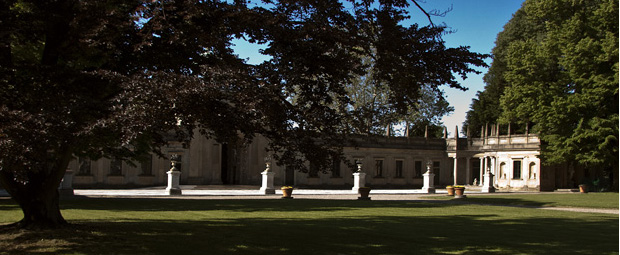
The Gardens
The area of Villa designed to the garden, about three hectares, was probably beginning divided into four compartments marked by pots of green citrus trees.
Its expansion and enlargement stood on the two main axes (north-south, east-west) along which are accomplished considerable and expensive structural works: there is the fountains of Galatea and the foutain of Neptune, the greenhouses with exotic fruits, and the irrigation system and water features have been improved.
With the spread, in the 18th century, the transalpine taste for the deciduous trees and with the introduction of hornbeam in Lombardy, the "carpinata" was born. The new interpretation of the classic big hedge in Villa Lainate finds wide application in a long “U” shaped path, made of a double row of hornbeam trees with twisted branches and pruned at once.
Over 300 hornbeams were replanted, to give back the park a large gallery over 4 meters high, for about 800 meters in total length.
A range of yews, once rigidly pruned like a blunt pyramid, still create the "Theatre of Verzura" natural theater for musical and theatrical performances.
The emerging focus on “english garden”, and its great popularity in the early 19th century allows, in 1808, the architect Luigi Canonica, to configurate "new grove" animated by small differences in ground level, with compartments to green trend irregular with prevalence of high trees and bushes.
The sides of “Esedra” with the niche of the terracotta sculpture of "Rape of Proserpina" were located two cold greenhouses intended for winter storage of citrus fruits and, later, two hothouses for exotic species. From a description written in 1840 by the botanist Linneo Tagliabue we have the proof of the great variety of plants planted: pineapple, banana, coffee, tamarind, palm trees, and even orchids, hibiscus and gardenias.Very interesting two Art Nouveau iron and glass greenhouses, the subject in 2015 of a massive recovery plan that obtained the funding of one million euro from the Cariplo Foundation.
Today there are trees in the Park belonging to 56 different species and shrubs, classified in 15 species. From a rare Ginko Biloba which likely put mansion dates back to 1850-55, with some Atlas Cedars, from Magnolia grandiflore, the oaks, the Bagolari.
Centuries of construction: sec. XVI - sec. XX
Authors: Luigi Canonica and Giuseppe Tramajoni
Extension: 40,000 square meters.